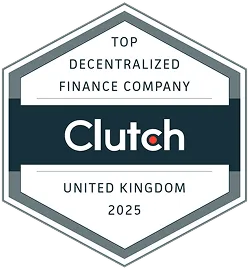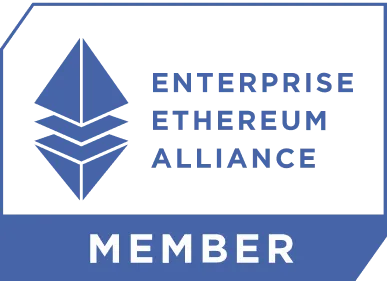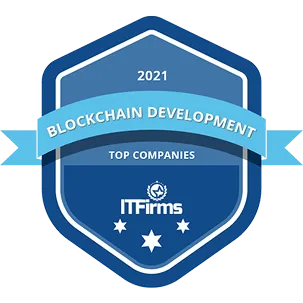7 Key DeFi Narratives in 2025 Shaping the Future of DeFi

Key DeFi Narratives in 2025 Shaping the Future of DeFi
The DeFi ecosystem continues to evolve at a rapid pace, with new projects and narratives emerging every year. As we look ahead to 2025, DeFi trends in 2025 are poised to redefine the landscape of blockchain-based finance. According to CoinGecko, The DeFi development in 2025 will focus on the growing intersection between traditional finance and blockchain innovation, with a range of new technologies, from AI-powered agents to liquid staking and decentralized physical infrastructure networks (DePIN), driving these shifts.
According to recent insights from Coindesk, DeFi and on-chain finance are becoming more integral to the broader crypto ecosystem, driving significant shifts in how financial transactions are conducted .With market dynamics evolving rapidly, it's essential to understand the DeFi narratives in 2025 that are likely to dominate the conversation. Whether it's the explosive growth of stablecoins, the increasing importance of liquid staking and restaking on Bitcoin, or the rise of DeFi projects types in 2025 targeting real-world asset (RWA) tokenization, these trends promise to bring both challenges and opportunities to DeFi enthusiasts and investors alike.
As the DeFi landscape in 2025 continues to mature, these trends provide valuable insight into the future of decentralized finance, shaping how DeFi will impact everything from liquidity pools to asset tokenization. This article explores the key narratives that are set to define the DeFi space in 2025, offering a glimpse into what founders, investors, and developers can expect from this rapidly evolving market.
Key DeFi Narratives in 2025
Several prominent narratives are driving the DeFi space forward in 2025, pushing the boundaries of traditional finance and creating new opportunities. Below, we explore the key narratives that are defining the future of decentralized finance.
1. AI Integration into DeFi
AI technology continues to integrate into DeFi development in 2025. With AI-driven strategies enhancing liquidity optimization, smart contract execution, and personalized financial services, AI will drive new innovations, allowing DeFi projects to evolve faster and more effectively.
2. The Rise of Memecoins and Their Own Platforms
Memecoins, popularized by community-driven projects, have seen explosive growth. In 2025, more meme coin projects, following in the footsteps of Pump.fun, are launching their own trading platforms. These platforms are tailored to their community's needs, fostering new opportunities for decentralized trading and liquidity. The trend indicates that meme coins are maturing beyond speculative assets into more sustainable DeFi ecosystems.
3. Improved Capital Efficiency for LPs through Market Making Models
One of the most significant DeFi trends in 2025 is the shift toward capital efficiency in DEXes, particularly through improvements in market-making models. Enhanced models such as automated market makers (AMMs) and liquidity provision (LP) strategies are becoming more refined, allowing liquidity providers to earn better rewards with less capital risk. To learn more about these models, check out our in-depth article on market-making models in DEX development.
4. New Tokenomics Mechanics for DEX Projects, like ve33
New tokenomics models are transforming how DEX projects are structured. A notable example is the ve33 (vote-escrowed 33) model, which introduces novel mechanisms for governance and rewards distribution. These models are designed to incentivize long-term commitment from token holders, ensuring better liquidity, governance participation, and overall project sustainability. This shift is one of the key DeFi narratives in 2025.
5. Stablecoins Continue to Power DeFi
Stablecoins remain the backbone of DeFi projects in 2025, with their role extending beyond facilitating transactions to serving as collateral for decentralized loans, liquidity provision, and risk mitigation strategies. Their stability and trust will continue to make them indispensable for DeFi users and developers alike.
6. Tokenization of Real-World Assets (RWA)
As DeFi development evolves, the tokenization of real-world assets (RWAs) will play a pivotal role in bringing traditional investments onto the blockchain. These tokenized assets—ranging from real estate to art and commodities—will open up new markets, offering more diversified investment opportunities within the DeFi space.
7. The Growth of DeFi Insurance Platforms
The demand for decentralized insurance protocols will grow in 2025 as users seek to mitigate risks in the increasingly complex DeFi ecosystem. These platforms will offer coverage against smart contract vulnerabilities, platform risks, and more, adding a layer of security to DeFi development.
Types of DeFi Projects
Decentralized Exchanges
Decentralized exchange development has become a pivotal component of the ever-evolving DeFi landscape. Let's explore what decentralized cryptocurrency exchanges are, their origins and development, as well as the various types that have emerged in the world of DeFi projects.
What Are Decentralized Cryptocurrency Exchanges?
Decentralized cryptocurrency exchanges, or DEXs, are online platforms that facilitate the peer-to-peer cryptocurrencies trading platforms without the need for a centralized intermediary. They operate on blockchain technology and smart contracts, enabling users to trade directly with one another while maintaining control of their funds.
The Emergence and Development of DEXs
DeFi exchange developed in response to the limitations and concerns associated with centralized exchanges. Centralized exchanges, which act as intermediaries between buyers and sellers, have been vulnerable to security breaches, regulatory issues, and the loss of user funds. DEXs sought to address these challenges.
The DEX development is closely intertwined with the rise of DeFi projects. As DeFi gained traction, DEXs became essential for trading DeFi tokens and other cryptocurrencies. DEXs initially faced challenges such as liquidity and user experience, but over time, they have evolved to address these issues, making them increasingly popular in the crypto space.
Types of Decentralized Exchanges
- Order Book DEXs: Order book DEX development operates similarly to traditional centralized exchanges, using order books to match buy and sell orders. Traders can place markets and limit orders, and prices are determined by supply and demand.
Examples: Matcha - Derivative DEX:
Derivativep DEXs development specialize in the trading of cryptocurrency derivatives, such as options, futures, and perpetual swaps. Users can speculate on the price movements of cryptocurrencies without owning the underlying assets. Learn more about Derivative DEXes in our recent article: DEXvolution. Unleashing the Potential of Perpetual DEX
Examples: dYdX, Hegic, Perpetual Protocol - AMM DEX: AMM development relies on algorithmic price determination and liquidity pools. Users provide liquidity by depositing pairs of tokens into these pools, and the AMM algorithm automatically adjusts prices based on the ratio of assets in the pool.
Examples: Uniswap, SushiSwap, PancakeSwap - Hybrid DEXs: they combine elements of both AMM and order book DEXs. They may offer the simplicity of liquidity pools and AMMs, as well as the advanced features of order book trading.
Example:Kyber Network offers both AMM and order book options
The Impact of DEXs on DeFi Development
Decentralized exchanges development plays a pivotal role in the DeFi ecosystem and the development of DeFi projects. They contribute to:
- Security: By reducing the need for centralized intermediaries, DEXs enhance the security of cryptocurrency trading, reducing the risk of hacks and fraud.
- Financial Inclusion: DEXs are accessible to anyone with an internet connection, fostering financial inclusion and aligning with the goals of DeFi projects.
- Liquidity: The proliferation of DEXs has increased liquidity in the crypto market, making it easier for users to trade various tokens.
- Transparency: Transactions on DEXs are recorded on the blockchain, offering transparency and reducing manipulation.
- Innovation: DEXs continue to drive innovation in the crypto space, with DeFi projects launching new tokens and financial instruments.
If you're a DEX founder, our recent article - Ultimate DEX Development Roadmap: From Idea to Launch is the essential resource you need. We cover every critical phase, from concept to launch, with in-depth insights that will equip you with the knowledge to successfully build and scale your decentralized exchange.
Summing up
Decentralized exchanges have reshaped the cryptocurrency trading platforms landscape, providing a secure, transparent, and accessible alternative to centralized exchanges. Their role in the DeFi projects development is undeniable, and as the crypto space evolves, DEXs are set to play an increasingly influential role. Get ready to explore the world of decentralized exchanges and DeFi development as you embark on your cryptocurrency trading journey.
Lending and Borrowing Protocols
Lending and Borrowing Protocols have taken center stage in the realm of DeFi development. Now, let's delve into what Lending and Borrowing Platforms are, how they have evolved, and the various types that have emerged to reshape the DeFi landscape.
What Are Lending and Borrowing Platforms?
Lending and Borrowing Platforms development are essential components of the DeFi ecosystem. They provide a decentralized framework for users to lend their assets and earn interest or borrow assets by providing collateral. These platforms operate without traditional intermediaries, thanks to smart contracts development that automate lending and borrowing processes, making them a cornerstone of DeFi projects.
The Emergence and Evolution of Lending and Borrowing Platforms
The genesis of Lending and Borrowing Platforms can be traced back to the DeFi movement. These platforms were conceived to address key challenges associated with traditional lending, including lengthy approval processes, intermediaries, and geographic restrictions.
As DeFi gained momentum, Lending and Borrowing Platforms became instrumental in the DeFi development ecosystem. They initially faced challenges such as liquidity issues and complex user interfaces. However, continuous development and innovation have helped them overcome these hurdles, making them an integral part of the DeFi development landscape.
Types of Lending and Borrowing Platforms
- Collateralized Lending Platforms: Users provide collateral in the form of cryptocurrency assets to borrow other assets.
Example: Compound
- Non-Collateralized Lending Platforms: These platforms do not require users to provide collateral but assess creditworthiness based on other criteria. They are still evolving within the DeFi space.
- Peer-to-Peer Lending Platforms: These platforms enable direct lending and borrowing between users, often facilitated by smart contracts.
Example: Aave
The Impact of Lending and Borrowing Platforms on DeFi Development
Lending and Borrowing Platforms have had a profound impact on DeFi development, with several notable contributions:
- Financial Inclusion: These platforms provide access to financial services for individuals who might not have access to traditional banking systems, aligning with the goals of DeFi platforms development.
- Reduced Intermediation: By eliminating intermediaries, Lending and Borrowing Platforms lower costs and grant users more control over their financial activities.
- Liquidity Enhancement: These platforms enhance liquidity in the DeFi space, ensuring that assets are readily available for borrowing and lending.
- Transparency and Security: All transactions are recorded on the blockchain, creating a transparent and secure environment that reduces the risk of fraud and manipulation.
- Innovation: Lending and Borrowing Platforms continue to foster innovation within the DeFi ecosystem, giving rise to new financial products and services.
Conclusion
Lending and Borrowing Platforms represent a significant leap forward in the DeFi development arena. They offer a secure, transparent, and inclusive approach to lending and borrowing, with substantial benefits for users and the DeFi projects they are built upon. As these platforms continue to evolve, they are set to play an increasingly pivotal role in shaping the future of financial services in the decentralized world.
Stablecoins
Stablecoins like USDC and DAI provide stability in the DeFi ecosystem. Stablecoins are the bedrock of Decentralized Finance development, serving as a critical component that brings much-needed stability to the volatile world of cryptocurrencies. Let’s dive into the concept of Stablecoins development, and their role in the DeFi ecosystem.
What Are Stablecoins in DeFi?
Stablecoins are cryptocurrencies designed to maintain a stable value, often pegged to a fiat currency like the US dollar or other real world assets. These digital assets offer a reliable store of value and a medium of exchange in the often turbulent cryptocurrency market. They are a fundamental building block of DeFi projects.
The Emergence and Evolution of Stablecoins in DeFi
The roots of Stablecoins can be traced to the need for stability within the cryptocurrency space. The first stablecoins were pegged to traditional fiat currencies and provided crypto users with a safe haven during market volatility. As DeFi development gained traction, the importance of stable value in DeFi projects became evident.
Stablecoins have evolved over the years, moving beyond simple fiat pegs. New iterations, such as algorithmic stablecoins and those collateralized by a basket of assets, have expanded the range of stable value options in the DeFi ecosystem.
Types of Stablecoins in DeFi
- Fiat-Collateralized Stablecoins: These stablecoins are backed by reserves of fiat currency held in a bank. Tether ( USDT) and Circle (USDC) are prime examples.
- Crypto-Collateralized Stablecoins: These stablecoins are backed by other cryptocurrencies held as collateral. DAI, a stablecoin in the MakerDAO ecosystem, is a notable example.
- Algorithmic Stablecoins: Algorithmic stablecoins use smart contracts to maintain price stability, often without collateral.
- Commodity-Collateralized Stablecoins: These stablecoins are backed by physical RWA like precious metals or commodities. They aim to provide stability with tangible assets. PAXGold is an example with PAXG - Gold backed cryptocurrency
The Impact of Stablecoins in DeFi Development
The role of Stablecoins in the DeFi ecosystem is paramount, with several notable contributions:
- Price Stability: Stablecoins provide a haven of stability within the volatile crypto market, enabling users to minimize exposure to price fluctuations.
- Liquidity: They facilitate liquidity within DeFi projects by serving as a medium of exchange and a store of value.
- Decentralized Trading: Stablecoins are essential for trading and investing within DeFi projects, ensuring seamless transactions.
- Global Accessibility: Stablecoins, with their stable value, are accessible to users worldwide, regardless of geographical location.
- Facilitating Lending and Borrowing: Stablecoins are often used as collateral for lending and borrowing within DeFi projects, enhancing financial flexibility.
Conclusion
Stablecoins play a pivotal role in maintaining stability within the dynamic world of DeFi development. They provide a crucial link between traditional finance and the decentralized future, offering users a reliable store of value and a medium of exchange. As DeFi projects continue to evolve, stablecoins will remain at the forefront, ensuring the resilience of the DeFi ecosystem.
Yield Farming
Yield protocols development has carved out a significant niche in the realm of DeFi projects development. In this comprehensive guide, we will explore the concept of yield farming platforms, their evolution, and their profound impact on the ever-expanding DeFi projects landscape.
What Are Yield Farming Platforms in DeFi?
Yield farming protocols, a cornerstone of DeFi, offer users the opportunity to earn rewards by providing liquidity to decentralized protocols. These platforms harness blockchain technology and smart contracts to automate the process, enabling users to optimize their crypto assets' potential returns.
The Emergence and Growth of Yield Farming Platforms
The emergence of yield farming platforms can be attributed to the evolving DeFi landscape. As DeFi projects gained traction, liquidity became a critical factor for their success. Yield farming, also known as liquidity mining, addressed this challenge by incentivizing users to provide liquidity to various DeFi protocols.
Yield farming platforms developed simple mechanisms but rapidly evolved to offer more sophisticated strategies. This evolution allowed users to maximize their returns while minimizing associated risks. It was in this environment that yield farming platforms truly began to flourish.
Types of Yield Farming Platforms
- Single-Asset Yield Farming: Users provide a single cryptocurrency as liquidity, and they are rewarded with interest or additional tokens.
- Liquidity Provision: Users provide liquidity by depositing a pair of assets into a decentralized exchange. Yield is earned from transaction fees and additional tokens.
Example: Uniswap, SushiSwap - Yield Optimizers: These platforms automatically shift liquidity between different DeFi protocols to maximize returns.
Example: Yearn Finance - Synthetic Asset Yield Farming: Users can provide liquidity to synthetic asset platforms to earn rewards.
Example: Synthetix
The Impact of Yield Farming Platforms on DeFi Development
Yield farming platforms have had a profound impact on the DeFi ecosystem, offering numerous advantages:
- Liquidity Boost: These platforms significantly enhance the liquidity of DeFi projects, making it easier for users to trade assets and providing a better overall user experience.
- Yield Generation: Yield protocols development allows users to maximize the potential returns on their cryptocurrency holdings, which is crucial in the DeFi space.
- Innovation: Yield farming continually fosters innovation in DeFi projects. Developers create new strategies and protocols to offer users more opportunities to optimize their yields.
- User Incentives: Users are incentivized to participate in DeFi projects, promoting the growth and sustainability of the ecosystem.
- Risk Management: The evolution of yield farming platforms has led to the creation of more sophisticated risk management strategies to protect user investments.
Conclusion
Yield farming platforms represent a dynamic force within the DeFi development ecosystem. Their ability to drive liquidity, generate yields, and promote innovation has made them a crucial component of DeFi projects. As DeFi continues to evolve, the role of yield farming platforms will remain central, fueling the growth and success of the decentralized finance landscape.
Synthetic Assets
Synthetic assets have become a revolutionary force in the realm of Decentralized Finance (DeFi) development. Let’s explore the concept of synthetic assets, their evolution, and the transformative impact they have on the dynamic DeFi projects ecosystem.
What Are Synthetic Assets in DeFi?
Synthetic assets, a fundamental building block of DeFi, are tokenized representations of real-world assets, such as stocks, commodities, or fiat currencies. They provide DeFi users with the ability to trade, invest in, and gain exposure to traditional assets within a decentralized ecosystem.
The Emergence and Growth of Synthetic Assets in DeFi
The emergence of synthetic assets is closely tied to the expanding DeFi landscape. As DeFi projects grew in number and complexity, the need to bridge the gap between the crypto and traditional financial worlds became apparent. Synthetic assets filled this gap by allowing users to create and trade tokens that mirrored the value of real-world assets.
Over time, synthetic asset platforms have evolved to offer increasingly diverse asset offerings and more sophisticated trading strategies. This evolution has enabled users to access a wide range of traditional a ssets without leaving the DeFi space.
Types of Synthetic Asset Platforms
- Single-Asset Synths: These platforms focus on creating synthetic versions of individual assets, such as gold, silver, or specific stocks.
- Multi-Asset Synths: These platforms offer a wider array of synthetic assets, allowing users to access diverse portfolios of traditional assets.
- Stocks and Equities Synths: Some platforms specialize in tokenizing stocks and equities, providing exposure to the stock market's performance.
- Commodity Synths: Users can access synthetic versions of commodities like oil, precious metals, and agricultural products.
The Impact of Synthetic Assets on DeFi Development
Synthetic assets have had a profound impact on DeFi development, offering various benefits and opportunities:
- Access to Traditional Assets: They enable DeFi users to access assets that were previously out of reach within the decentralized ecosystem.
- Diversification: Users can diversify their portfolios by including assets that are not native to the crypto space.
- Risk Mitigation: Synthetic assets offer a way to hedge against volatility in the cryptocurrency market.
- Liquidity and Trading: The trading of synthetic assets increases liquidity within DeFi projects and introduces new trading opportunities.
- Innovation: The development of synthetic assets continues to drive innovation in DeFi, leading to new financial products and services.
Conclusion
Synthetic assets stand as a pivotal innovation in the DeFi development landscape, bridging the gap between traditional finance and the decentralized world. They provide users with the power to access a wide range of assets while staying within the realm of DeFi projects. As DeFi continues to evolve, the role of synthetic assets will remain central, shaping the financial future in the decentralized ecosystem.
Liquid staking
Liquid staking has emerged as a transformative force in the ever-evolving world of Decentralized Finance development. Let’s delve into the concept of liquid staking, its evolution, and the profound impact it has on the dynamic DeFi projects landscape.
What Is Liquid Staking in DeFi?
Liquid staking is a DeFi innovation that allows token holders to stake their proof-of-stake (PoS) assets while still maintaining liquidity and the ability to trade or use their assets for other purposes. It offers users a way to participate in PoS networks and generate rewards without the typical lock-up period.
The Emergence and Growth of Liquid Staking in DeFi
The development of liquid staking is closely tied to the expansion of PoS blockchains and the DeFi ecosystem. As PoS networks gained popularity for their energy efficiency and security features, the need for liquid staking solutions development became evident. Users wanted to harness the benefits of staking while retaining the flexibility to access their assets when needed.
Liquid staking platforms have evolved to provide users with diverse options for participating in PoS networks while enjoying liquidity. This evolution includes more PoS assets, cross-chain staking, and advanced governance and participation mechanisms.
Types of Liquid Staking Platforms
- Single-Asset Liquid Staking: These platforms focus on providing liquidity for a specific PoS asset, such as Ethereum (ETH) or Polkadot (DOT).
- Multi-Asset Liquid Staking: Some staking platforms offer users the ability to stake multiple PoS assets simultaneously, providing a diversified approach to liquid staking.
- Cross-Chain Liquid Staking: These platforms facilitate staking on multiple PoS blockchains, enabling users to access various networks while maintaining liquidity.
- Governance and Voting: Liquid staking platforms are evolving to include governance features, allowing token holders to participate in network decisions while staking.
The Impact of Liquid Staking on DeFi Development
Liquid staking has had a profound impact on DeFi development, offering various benefits and opportunities:
- Liquidity and Flexibility: It allows users to stake PoS assets while retaining liquidity and the freedom to use their assets for other purposes.
- Participation in PoS Networks: Liquid staking enables broader participation in PoS networks, allowing more users to secure and govern these networks.
- Enhanced Yield Generation: Users can earn rewards and yield on their staked assets, even while they remain liquid.
- Risk Mitigation: It provides a way to hedge against the price volatility of PoS assets by enabling their use in other DeFi projects.
- Cross-Chain Access: Users can access and participate in multiple PoS networks through cross-chain liquid staking.
Conclusion
Liquid staking stands as a revolutionary development in the DeFi landscape, offering users the ability to engage in PoS networks while enjoying liquidity and flexibility. As DeFi continues to evolve, the role of liquid staking will remain central, shaping the financial future in the decentralized ecosystem.
The Impact of DeFi Projects
DeFi projects are poised to revolutionize finance. Their impact includes:
- Financial Inclusion: DeFi projects offer financial services to the unbanked and underbanked, bridging gaps in financial access.
- Reduced Intermediation: Eliminating intermediaries reduces fees and increases control over finances.
- Transparency and Security: Blockchain technology ensures transparency, reducing fraud risk.
- Global Reach: DeFi projects have a global reach, removing geographic limitations.
- Innovation: DeFi encourages innovation, with new projects and protocols constantly emerging.
Conclusion
DeFi development and DeFi projects are redefining the future of finance. As DeFi continues to evolve, its potential to democratize finance, reduce barriers, and foster innovation is undeniable. Stay tuned as the world of DeFi development shapes the financial landscape for years to come.
We ❤️ Development
Follow us on social media to receive the hottest blockchain development updates
Twitter ⚡️ Telegram ⚡️ LinkedIn




%20MetaDEXes%20work%20thumbnail.webp)







%201.webp)



